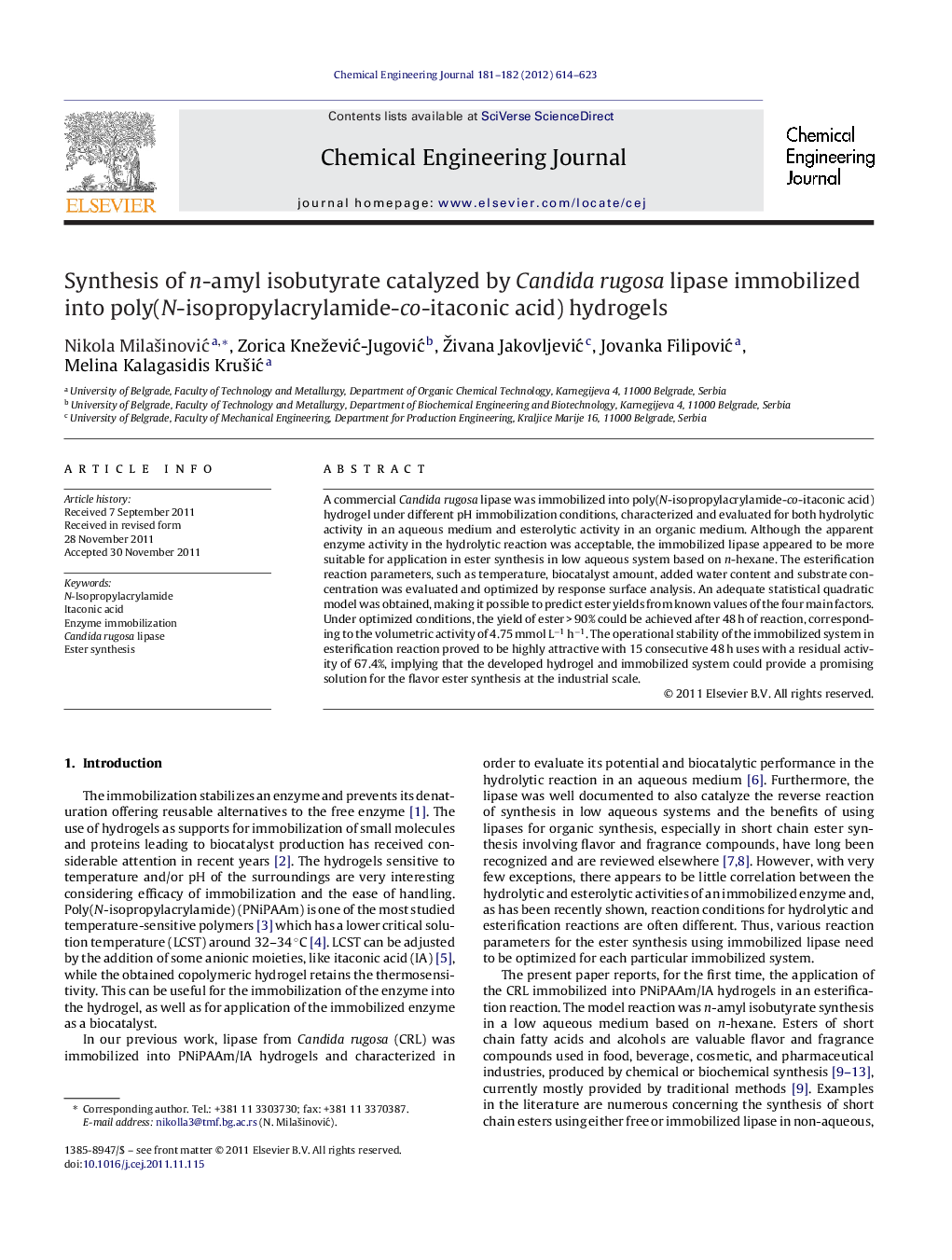| Article ID | Journal | Published Year | Pages | File Type |
|---|---|---|---|---|
| 150242 | Chemical Engineering Journal | 2012 | 10 Pages |
A commercial Candida rugosa lipase was immobilized into poly(N-isopropylacrylamide-co-itaconic acid) hydrogel under different pH immobilization conditions, characterized and evaluated for both hydrolytic activity in an aqueous medium and esterolytic activity in an organic medium. Although the apparent enzyme activity in the hydrolytic reaction was acceptable, the immobilized lipase appeared to be more suitable for application in ester synthesis in low aqueous system based on n-hexane. The esterification reaction parameters, such as temperature, biocatalyst amount, added water content and substrate concentration was evaluated and optimized by response surface analysis. An adequate statistical quadratic model was obtained, making it possible to predict ester yields from known values of the four main factors. Under optimized conditions, the yield of ester > 90% could be achieved after 48 h of reaction, corresponding to the volumetric activity of 4.75 mmol L−1 h−1. The operational stability of the immobilized system in esterification reaction proved to be highly attractive with 15 consecutive 48 h uses with a residual activity of 67.4%, implying that the developed hydrogel and immobilized system could provide a promising solution for the flavor ester synthesis at the industrial scale.
Graphical abstractFigure optionsDownload full-size imageDownload as PowerPoint slideHighlights► Poly(N-isopropylacrylamide-co-itaconic acid) as support for lipase immoblization. ► The biocatalyst for n-amyl isobutyrate ester synthesis. ► The immobilized lipase shows excellent storage stability. ► High ester conversions were obtained after 15 repeated cycles.
